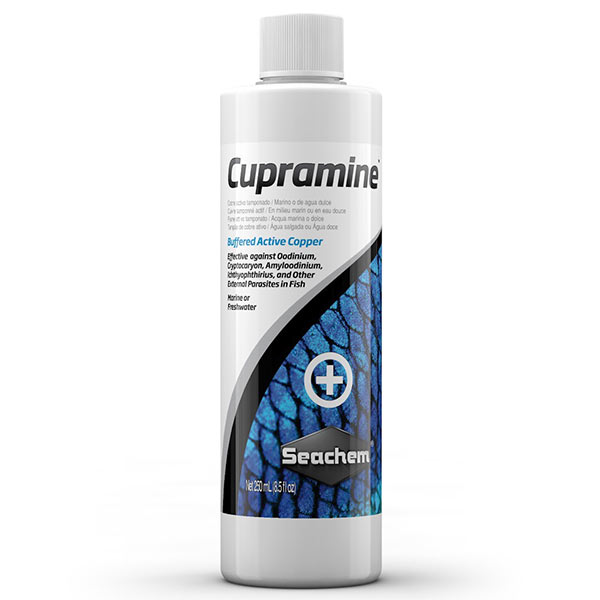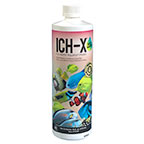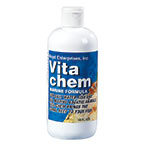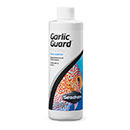Overview
| * | Copper treatment for aquarium fish affected by external parasites |
| * | Effectively eradicates common aquarium ectoparasites including Ich |
| * | Easily removable with chemical filtration in freshwater or marine aquariums |
Seachem Cupramine is buffered, active copper safer than copper sulfate or chelates for eradicating ectoparasites. With a 4X concentration gap between the minimal therapeutic dose and the toxic dose, Cupramine allows safe and effective use even at low concentrations. Does not contaminate the aquarium filter bed and can easily be removed with activated carbon or copper-removing chemical filter media.
Seachem Cupramine effectively eradicates Oodinium, Cryptocaryon, Amyloodinium, Ichthyophthirius, and other ectoparasites of both freshwater and marine fish. 100 ml treats over 500 gallons. Not for use in aquariums housing invertebrates.
Directions for Use
Remove all invertebrates. Turn off UV sterilizer; remove chemical filtration. If the bottle has a dropper cap, use 20 drops (1 mL) per 40 L (10.5 gallons) the first day, wait 48 hours, then repeat. On non-dropper caps, each inner ring is 1 mL. In freshwater, use half dose. Final copper concentration is 0.5 mg/L (0.25 mg/L in freshwater). Leave at this concentration for 14 days. Do not re-dose without testing levels using MultiTest Copper (DFS# 4343010).
Do not use in conjunction with any other medication. If tank has ever been treated with an ionic copper (e.g. copper chloride, sulfate or citrate), test copper level after initial dosing. Although most fish tolerate Cupramine to 0.8 mg/L, it is not advisable to exceed 0.6 mg/L copper. Remove with activated carbon.
In case of eye exposure, promptly & thoroughly wash eyes with water & seek medical attention.
General Information
Cupramine effectively eradicates Oodinium, Cryptocaryon, Amyloodinium, Ichthyophthirius, and other ectoparasites of both freshwater and marine fish. It is superior to copper sulfate, chloride & citrate: it is non-acidic, less toxic to fish, remains in solution, and does not contaminate the filter bed. It is superior to chelates: it is fully charged (ionic), active at low concentrations, and is removable with carbon.
Why It's Different
There is more than a four-fold concentration gap between the minimal therapeutic dose (0.2 mg/L) and the toxic dose (0.8 mg/L). Cupramine is easily removable with chemical filtration. It is highly effective and safe in freshwater as well as marine water.












